#Vologda Oblast
Explore tagged Tumblr posts
Text

Ulitsa Zavodskaya, Vozhega, Vologda Oblast.
56 notes
·
View notes
Text

Russian women near the Sharshenga River praying to trees
Russian women near the Sharshenga River praying to trees. Kozma Prazhsky in the Czech Chronicle (XII century) reported that the Slavs prayed to trees in sacred groves. A similar observation was made by the German chronicler Helmgold (XII century), who described the life and customs of the Polabian Slavs.
One of the veneration of trees among the Eastern Slavs, it is mentioned in the "Life of Constantine of Murom", and John Chrysostom spoke about the facts of the existence of special prayers to trees among the Slavic people. [He did more than that; he persecuted people who did that, in his own region of Syira and Asia Minor.] This practice is well known even today in Christianity. People didn't throw away their praying rituals of the past…
Photo source: Matea Vuković, Slavic Rituals The Sharzhenga (Russian: Шарженга, Шарженьга) is a river in Nyuksensky, Babushkinsky, and Nikolsky Districts of Vologda Oblast in Russia.
#Sharshenga River#Russia#praying to trees#Kozma Prazhsky#Czech Chronicle#XII Century#Slavs#trees#sacred groves#German chronicler#Helmgold#Polabian Slavs#Eastern Slavs#Life of Constantine of Murom#john chrysostom#prayers#Matea Vuković#Slavic rituals#Nyuksensky#Babushkinsky#Nikolsky#Vologda Oblast
4 notes
·
View notes
Text

District Court in Cherepovets, Vologda Oblast, Russia
Russian vintage postcard
#postal#russia#district court#historic#ansichtskarte#vologda oblast#sepia#vintage#tarjeta#oblast#briefkaart#photo#district#court#russian#vologda#postkaart#ephemera#postcard#postkarte#photography#carte postale#cherepovets
4 notes
·
View notes
Text
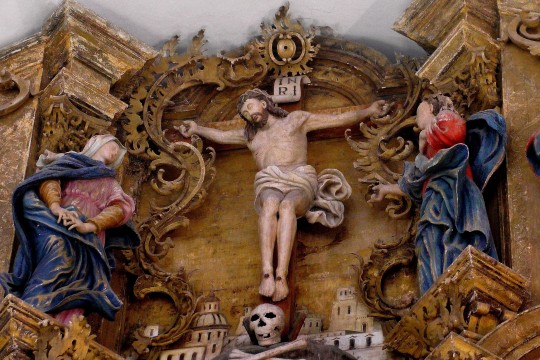
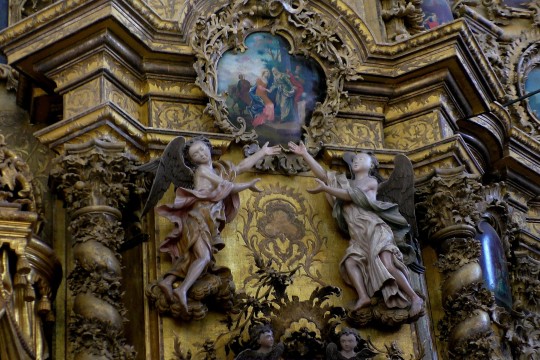
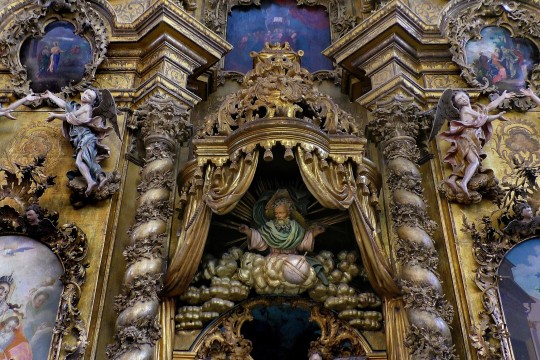

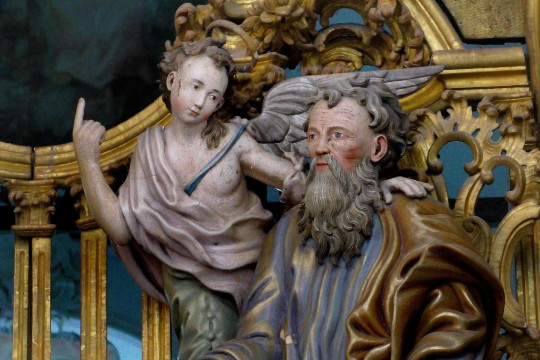


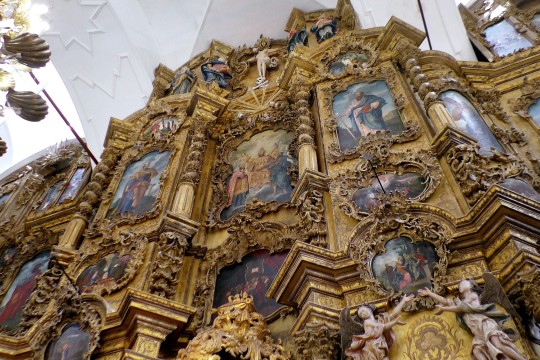
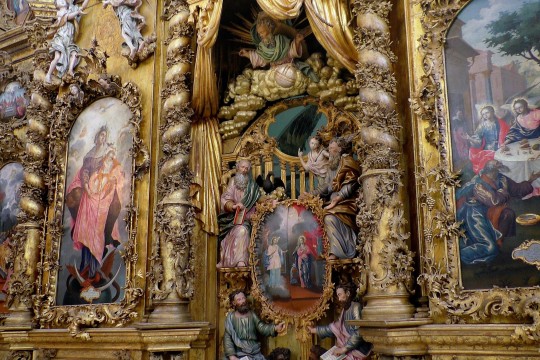
Iconostasis of Troitse-Gledensky monastery in Vologda oblast, Russia.
96 notes
·
View notes
Text

Russian Federal Subject Flag Wars: Round 1
This tournament will focus on the flags of Russia’s 83 federal subjects, which includes 21 republics, 9 krais, 46 oblasts, 2 federal cities, 1 autonomous oblast, and 4 autonomous okrugs. It will not include the flags of the land stolen from Ukraine.
The tournament will be followed by the Regional Flag Wars, a huge competition featuring the flags of regions/administrative divisions, with only one flag per country. Over the past year, I’ve released numerous polls to decide which regional flag will be included for each country. Russia is the final country on the list, and it is receiving its own tournament due to having so many administrative divisions. I hope everyone enjoys this tournament and is looking forward to the Regional Flag Wars! The Russian Federal Subject Flag Wars will begin this week.
Round 1:
1. Tver Oblast vs. Amur Oblast vs. Jewish Autonomous Oblast vs. Kamchatka Krai vs. Karelia
2. Yamalo-Nenets Autonomous Okrug vs. Bashkortostan vs. Tambov Oblast vs. Udmurtia vs. Kursk Oblast
3. Samara Oblast vs. Pskov Oblast vs. Adygea vs. Chukotka Autonomous Okrug vs. Khakassia
4. Khabarovsk Krai vs. Kalmykia vs. Altai Krai vs. Zabaykalsky Krai vs. Mordovia
5. Moscow Oblast vs. Dagestan vs. North Ossetia–Alania vs. St. Petersburg vs. Saratov Oblast
6. Primorsky Krai vs. Yaroslavl Oblast vs. Leningrad Oblast vs. Astrakhan Oblast vs. Komi Republic
7. Krasnoyarsk Krai vs. Irkutsk Oblast vs. Omsk Oblast vs. Lipetsk Oblast vs. Kabardino-Balkaria
8. Moscow vs. Ingushetia vs. Kostroma Oblast vs. Khanty-Mansi Autonomous Okrug vs. Tomsk Oblast
9. Perm Krai vs. Orenburg Oblast vs. Stavropol Krai vs. Volgograd Oblast vs. Belgorod Oblast
10. Mari El vs. Kaliningrad Oblast vs. Sverdlovsk Oblast vs. Sakha vs. Arkhangelsk Oblast
11. Krasnodar Krai vs. Penza Oblast vs. Buryatia vs. Nizhny Novgorod Oblast vs. Kurgan Oblast
12. Chelyabinsk Oblast vs. Nenets Autonomous Okrug vs. Karachay-Cherkessia vs. Murmansk Oblast vs. Altai Republic
13. Novosibirsk Oblast vs. Tuva vs. Vologda Oblast vs. Smolensk Oblast vs. Novgorod Oblast
14. Tatarstan vs. Sakhalin Oblast vs. Ulyanovsk Oblast vs. Ryazan Oblast vs. Chechnya vs. Tyumen Oblast
15. Ivanovo Oblast vs. Chuvashia vs. Vladimir Oblast vs. Rostov Oblast vs. Magadan Oblast vs. Bryansk Oblast
16. Kaluga Oblast vs. Kemerovo Oblast vs. Oryol Oblast vs. Kirov Oblast vs. Voronezh Oblast vs. Tula Oblast
16 notes
·
View notes
Text

Masha Ivashintsova
Belozersk, Vologda Oblast, USSR, 1979
18 notes
·
View notes
Text

A typical wooden structure on the outskirts of Yaroslavl Oblast
Russia
located in the Central Federal District, surrounded by
the Tver, Moscow, Ivanovo, Vladimir, Kostroma, and Vologda oblasts.
Photo credit :
This wonderful photo is by
cat___unicorn (IG)
4 notes
·
View notes
Text
Ignatyevo, Cherepovetsky District, Vologda Oblast
some place in russia
What if when we were born we were each assigned a Wikipedia page like a social security number would that be fucked up or what
126K notes
·
View notes
Text

Ulitsa Molodezhnaya, Pokrovskoe, Vologda Oblast.
33 notes
·
View notes
Text

Church of Christ the Saviour on the banks of the Kokshenga river, Tarnogsky District, Vologda Oblast, Russia
Russian vintage postcard, illustrated by Ivan Bilibin
#old#postcard#illustrated#postkaart#russian#ivan#district#tarnogsky#ivan bilibin#vintage#briefkaart#postal#kokshenga#ansichtskarte#bilibin#river#church#ephemera#saviour#photography#photo#church of christ#banks#vologda oblast#postkarte#tarjeta#vologda#oblast#russia#tarnogsky district
4 notes
·
View notes
Text
1-2-11
Semigorye, Vologda Oblast: a village in Russia with a population of 14 as of 2002
Triglav Film: a Slovenian film studio established in 1947. It is the second studio founded in post-World War II Yugoslavia and is named after Triglav, the highest mountain in Slovenia, which is also the name of a pagan deity
1 note
·
View note
Text
Nikulino (Russian: Никулино) is a rural locality (a village) in Markovskoye Rural Settlement, Vologodsky District, Vologda Oblast, Russia. The population was 2 as of 2002.[1]
ur government assigned gender for the day is the first thing u get when u click this link to a randomised wikipedia article. NO REROLLS . i am the trollsteineggje mountain in norway
125K notes
·
View notes
Text





Russian Federal Subject Flag Wars: Round 1, Bracket 13
4 notes
·
View notes
Text
there are 4 groups in my year and dept. With 12 20 10-12(?) and 18(?) people. I don't know ~everyone~, about half the people, and I'm in the first group. The 3rd and 4th groups (the amount of students in which I'm a bit unsure of) have their summer technological practice set in factories in 2 towns out of but close to Moscow (in Moscow oblast), and they will provide good practice (to 3rd group especially, to 4th — it's said to be passable/sufficient, not bad by any means at least), but the 1st and 2nd groups are going to go somewhere that will not provide almost anything useful, as said by profs and upperclassmen. We were told 5 (at first, now it's 10) students can go to Vologda which provides extremely good practice, lodgings (like good 2-person rooms in hotels) and even pays some money (gives employment!) during that one month of practice (amount not disclosed to us lol so I think it will just more or less cover food there). What do you think. There are 12 (14 at first) people who want to go there. 3 of whom are from the 3rd (1 girl 2 guys) group and 4 from the 4th (2 girls and 2 guys). Might I say this is ridiculous. I can handle the girls and one guy from 3rd group but. The guys from the 4th group are also taking part in a project within our dept (with teachers involved in it as well), and the factory they are going to is affiliatted with their group and their topics too!!! But nooo. They just neeeed Vologda. Can I kill them? They are annoying. They look annoying and they have annoying voices/demeanor. They're always grinning and doing their own thing on their laptops. They barged into a lecture in a discipline that is not taught to their group bc they mixed up (as in didn't check) the classroom and that disrupted the lecture (it was NOT the first 2 weeks of the semester so they should have known which class to go to)
I've been THE person who got in touch with the faculty and been going there pretty regularly and exchanging info abt this, btw. I want to submit the list of people myself but I cannot do that. I'm going to have a tough day tmr aren't I.
#anaesthesia personal#anaesthesia_personal#I hate guys. I hate. Hate guys from the 4th group. In our year there is no normal guy there. They are all weird and annoying#But these 2 also have their own speciiific flavor of annoying#I literally hate half the people who want to go to Vologda#There are some I have only vaguely heard of but I think it was in context of them having academic debts.#Soo not the best people. AND WHEN THE NUMBER WAS 5 (THE AMOUNT OF PEOPLE WHO COULD GO) I ASKED THE PERSON IN#CHARGE OF SENDING US TO PRACTICE HOW SHE'S GOING TO CHOOSE WHO'LL GO. LIKE 1ST AND 2ND GROUP BC THEY HAVE THE WORSE#FACTORY? OR BY GRADES? THE ANSWER? “FOR NOW YOU'RE ALL THE SAME TO ME HOW CAN I CHOOSE”#MIND YOU THERE WERE 14 PEOPLE WHO WANTED TO GO AND ONLY 5 VACANCIES AT THAT MOMENT#BUT SHE WILL HAVE TO CHOOSE TOMORROW AND I'M NOT GIVING UP MY PLACE TO SOME DUMB GUY WITH 60/100 FOR HIS EVERY GRADE
0 notes
Text
Russia abandons modernization of power plants due to lack of money, equipment, media reports

The Russian government has allowed several companies to abandon the modernization of over a dozen power plants across the country due to a lack of funding and equipment, Russian news agency Interfax reported on Feb. 14, citing an order published on the governmental website the day prior.
Though Russian officials have largely dismissed the impact of Western sanctions imposed over the full-scale invasion of Ukraine, warning signs about the state of Russia’s economy continue to mount coming into 2025.
Tatneft Thermal Power Plant in Nizhnekamensk was removed from the list of modernization projects, and its renovation was postponed until 2027. Avtozavodskaya and Quadra combined heat and power plants, located in Nizhny Novgorod and Voronezh oblasts, respectively, were also excluded.
Reasons for the decision included rising equipment prices, which would threaten the company’s financial stability, and the recognition that the project was not profitable due to the cost of turbines, according to the document.
Russia’s Territorial Generation Company No. 2 , which supplies Arkhangelsk, Vologda, Kostroma, Novgorod, and Yaroslavl oblasts, was allowed not to renovate its power plants in Kostroma and Yaroslavl due to financing difficulties.
The company originally planned to obtain funds for the projects from Russia’s Alfa Bank but was unable to agree on loans, the news agency reported.
The Russian government approved the modernization project’s abandonment of the Nevinnomysskaya Condensing Power Plant in Stavropol Krai, the cost of which had reportedky risen by 454%.
Russia’s Siberian Generating Company was also relieved of requirements to modernize four power plants in Siberia. The company will have to pay about 2 billion rubles ($22 million) for the projects to be phased out.
The Second Generation Company of the Wholesale Electricity Market, owned by Russian energy giant Gazprom, was also released from its obligations to renovate its power plant in the city of Surgut due to a 16-month delay in equipment deliveries. Billionaire Viktor Vekselberg’s T Plus was also allowed not to modernize the plants he owned in Izhevsk and Samara.
The combined effect of sanctions and inflation is beginning to threaten the Russian economy in various sectors, including automotive, aviation, and retail.
This development comes amid a growing push by U.S. President-elect Donald Trump to launch negotiations in Ukraine as soon as possible, though Moscow has shown little interest in peace talks.
Russia buys acceptance with cash, plunging economy into uncertainty
For Russia’s military recruiters, money talks. In July, Russian President Vladimir Putin doubled the federal signing-on bonus for contract soldiers to 400,000 rubles ($3,850) — over five times the country’s average monthly wage. Regional governments are expected to top this up further, although th…

The Kyiv IndependentKatie Marie Davies

0 notes
Text
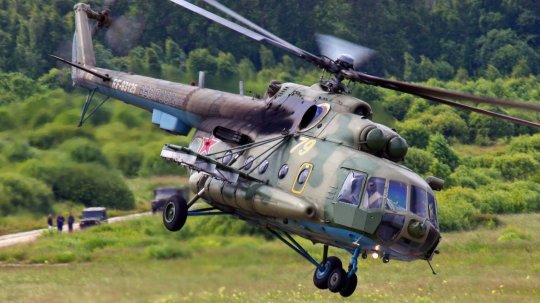
Mi-8 helicopter "disappeared from the radar" in the marshes According to RuZZian media, a Mi-8 helicopter has disappeared from radar over Lake Onega in Karelia.
There were 3 people on board, and the search for the aircraft is ongoing.
The aircraft belongs to the RuZZian Emergencies Ministry and was flying from Petrozavodsk to Vytegra, Vologda Oblast.
0 notes